Abstract
1. The spontaneous relaxation of the potassium contracture and the relaxation induced by the removal of extracellular calcium or the restoration of the original potassium concentration, in the frog heart, show a strong dependence on temperature.
2. The energy of activation of the later exponential phase of the spontaneous relaxation is 10·43 kcal mole-1, a value close to that reported for the binding of calcium ions by isolated sarcoplasmic reticulum, but larger than that for the calcium efflux from mammalian heart.
3. The use of metabolic inhibitors shows that relaxation can be sustained when glycolysis is poisoned, but the disruption of oxidative phosphorylation slows relaxation.
4. Poisoning of both glycolysis and oxidative phosphorylation blocks all but the small initial part of the spontaneous relaxation of the potassium contracture and also interferes with relaxation induced by other means.
5. The results are considered to favour the existence, in frog heart, of an active intracellular relaxing system which uses ATP as its substrate to lower the sarcoplasmic calcium concentration. This system is likely to be the sarcoplasmic reticulum but the mitochondria could also be involved.
Full text
PDF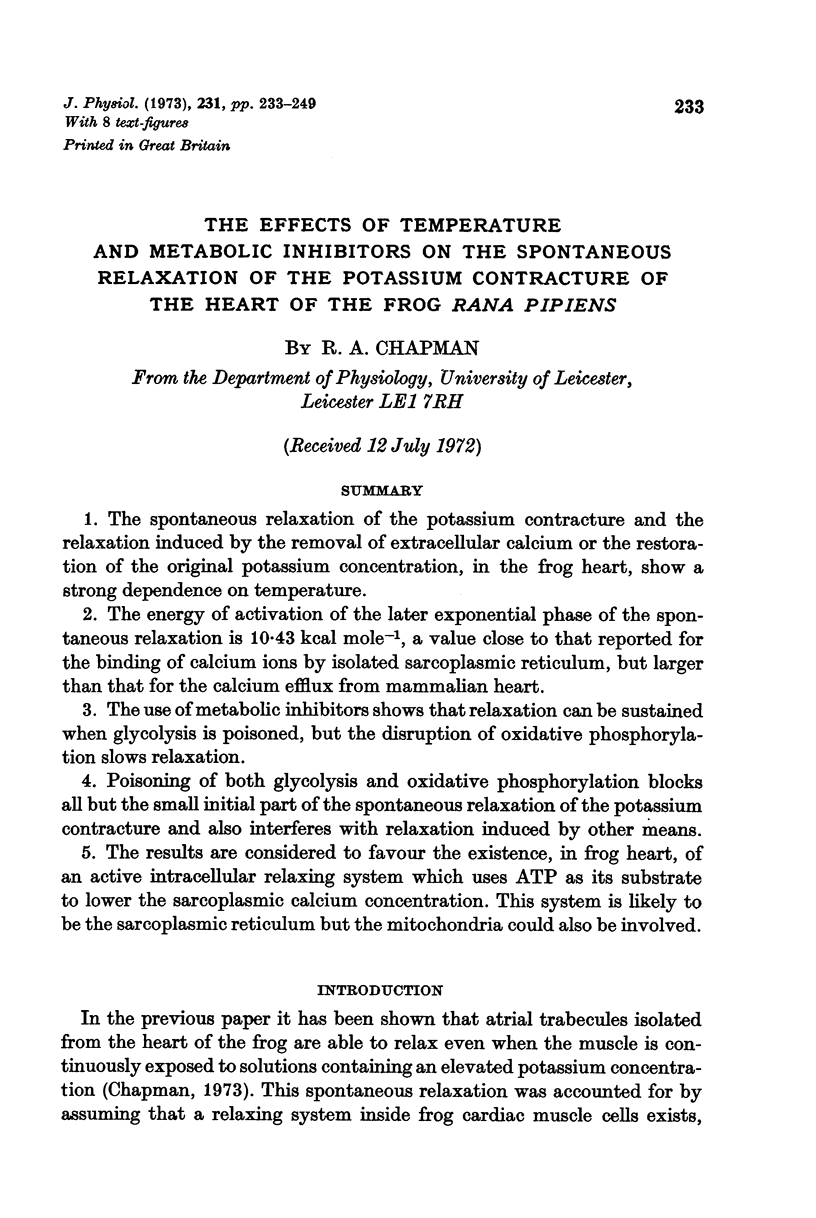
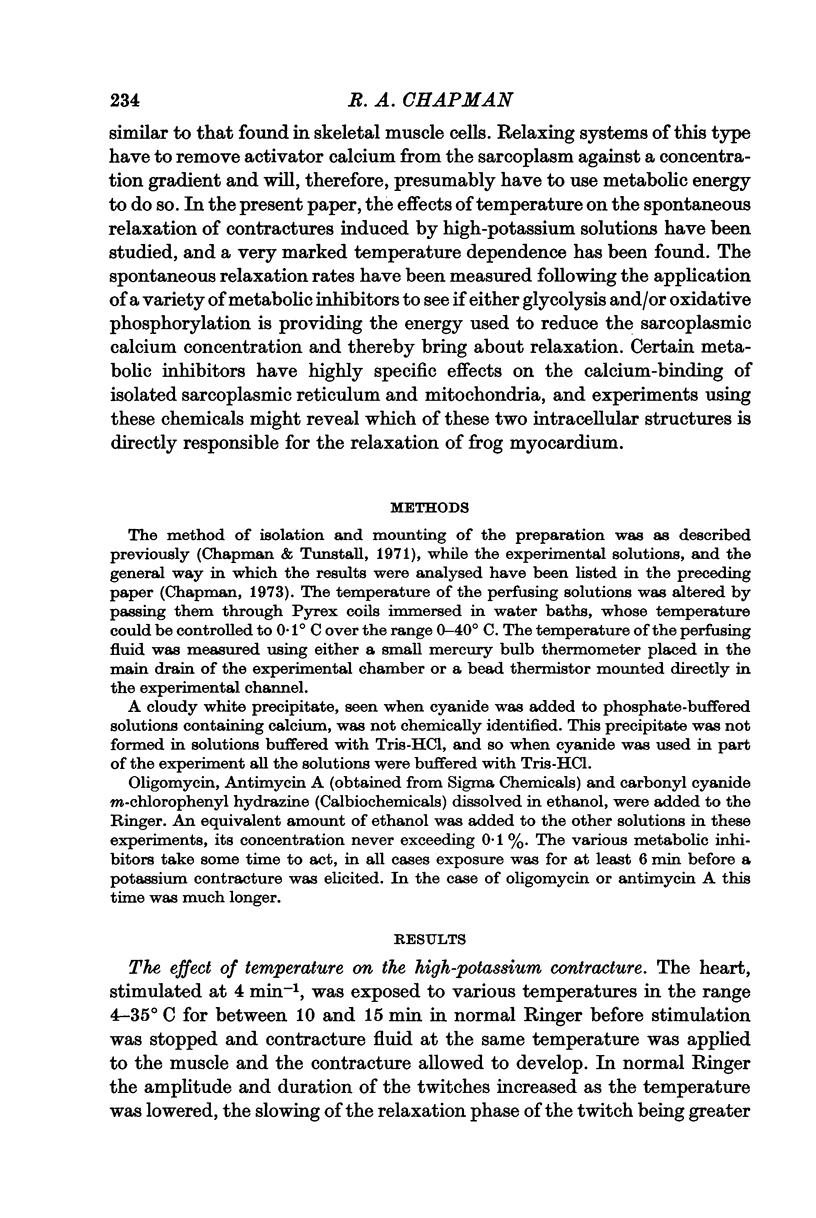
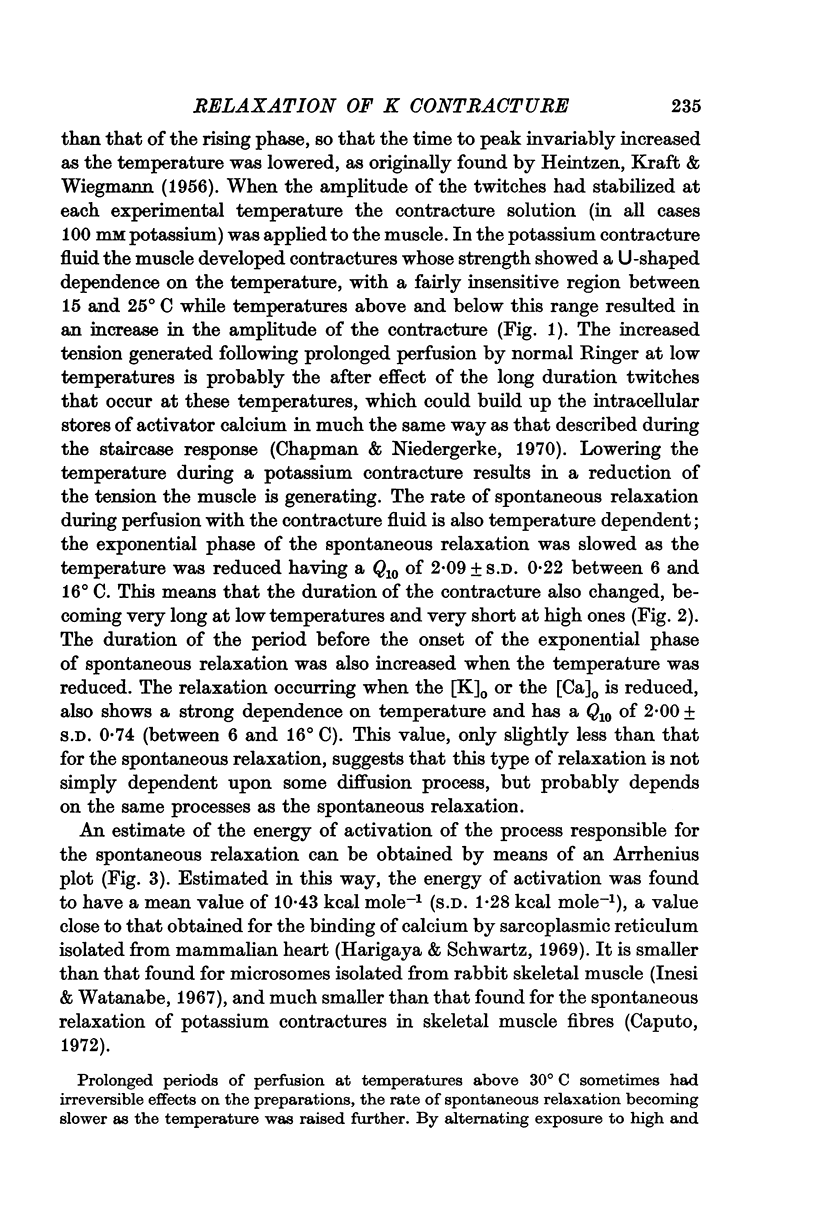
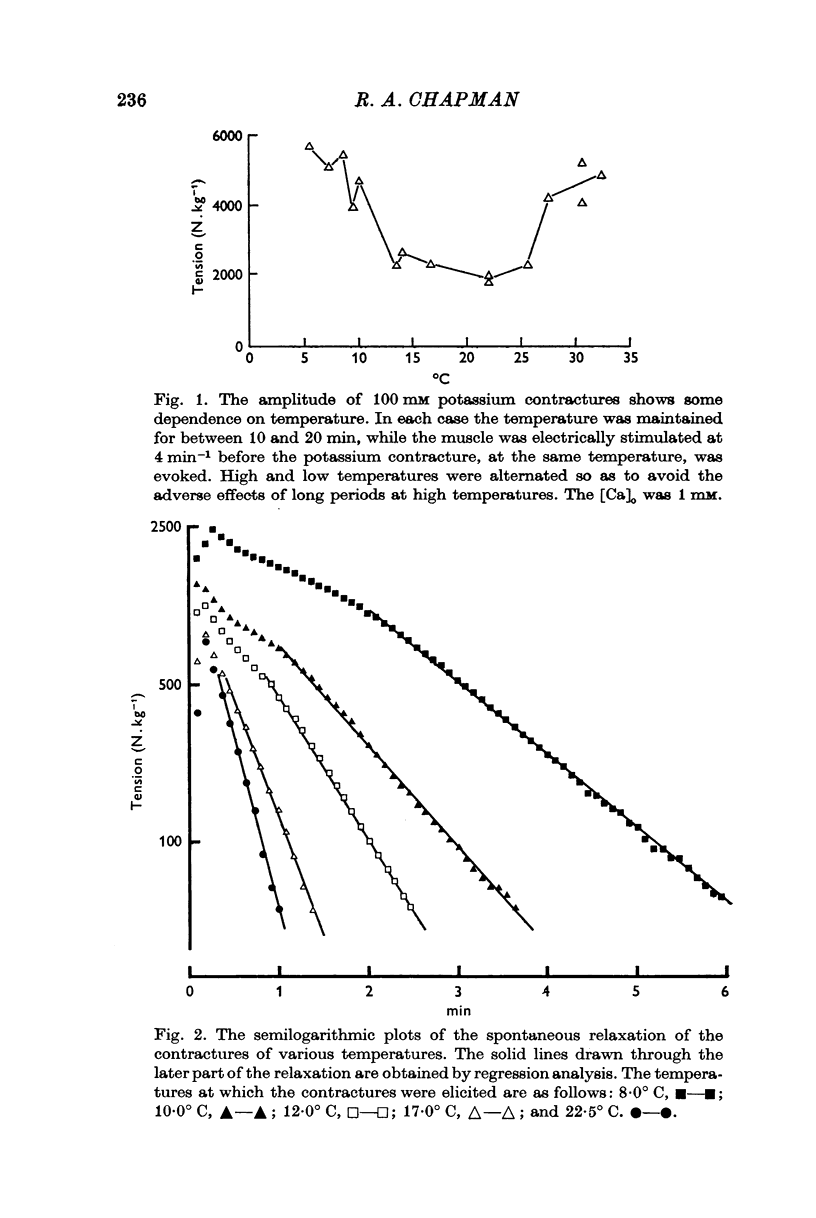
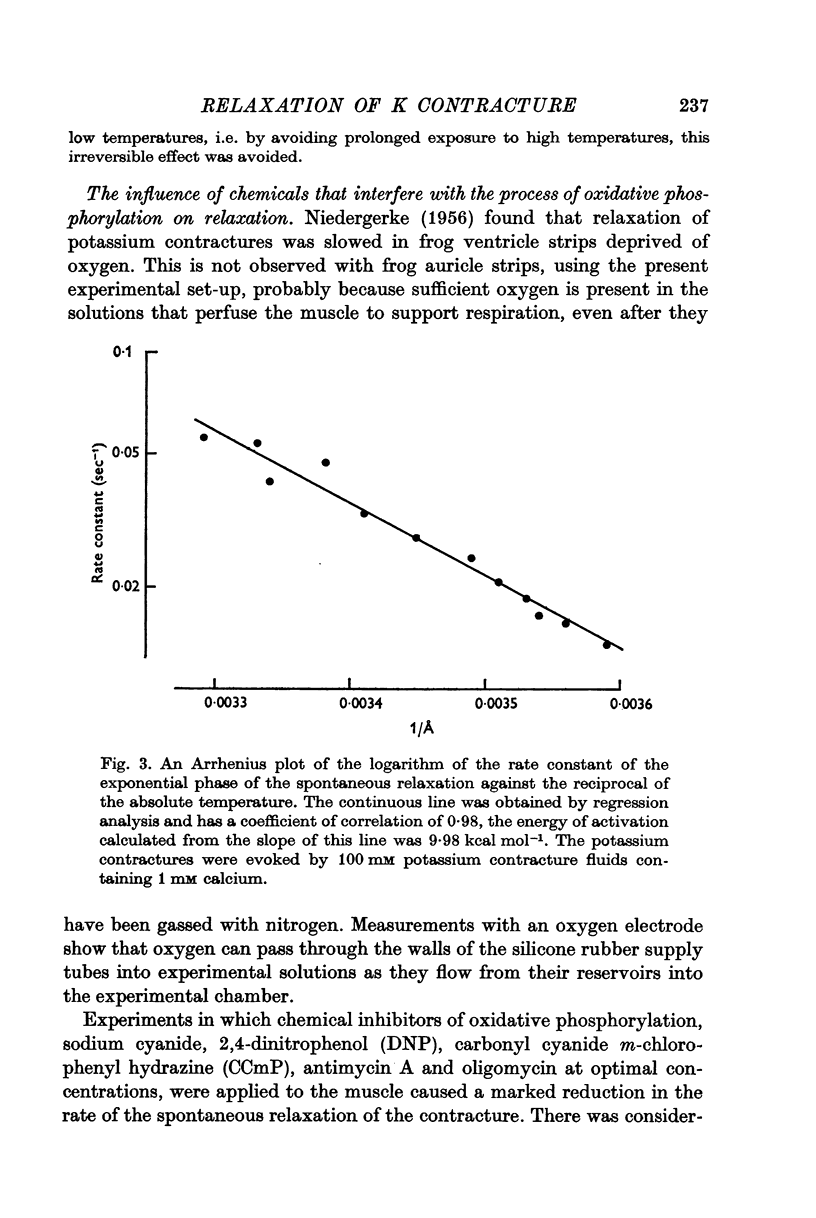
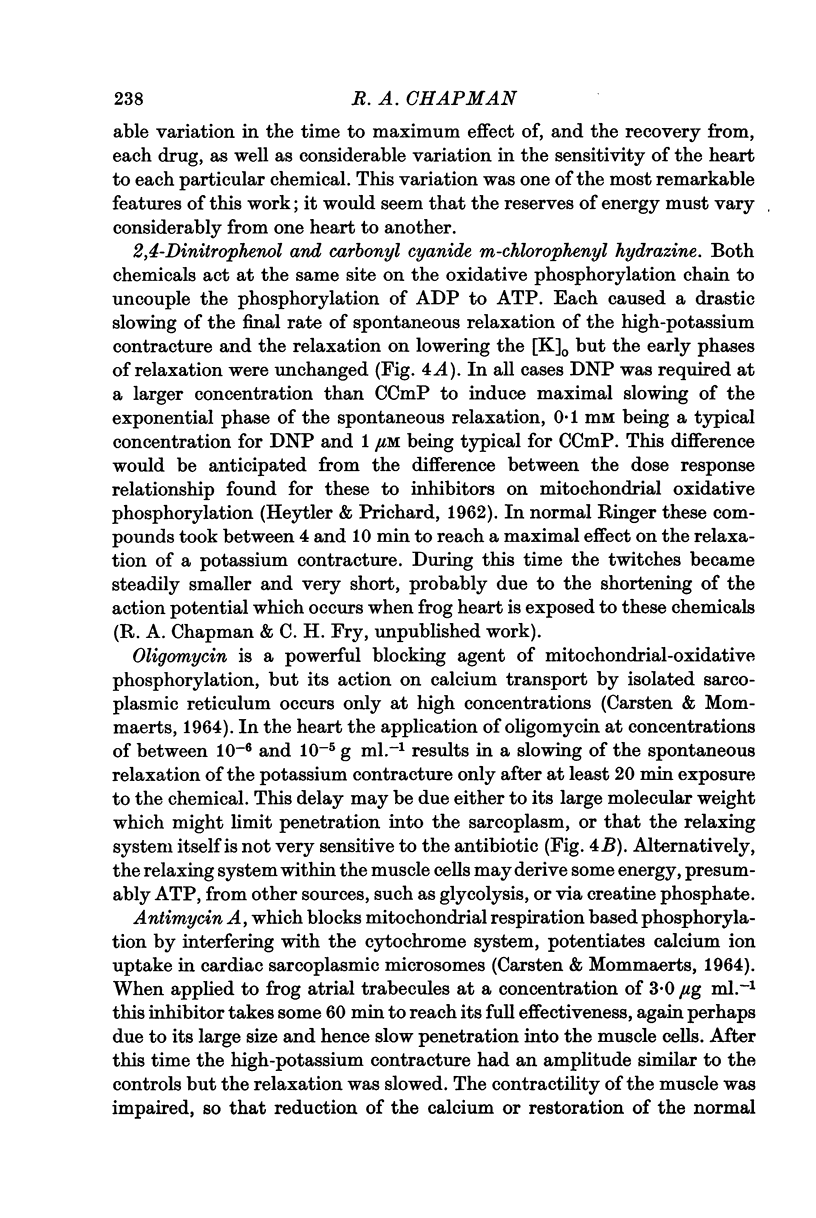
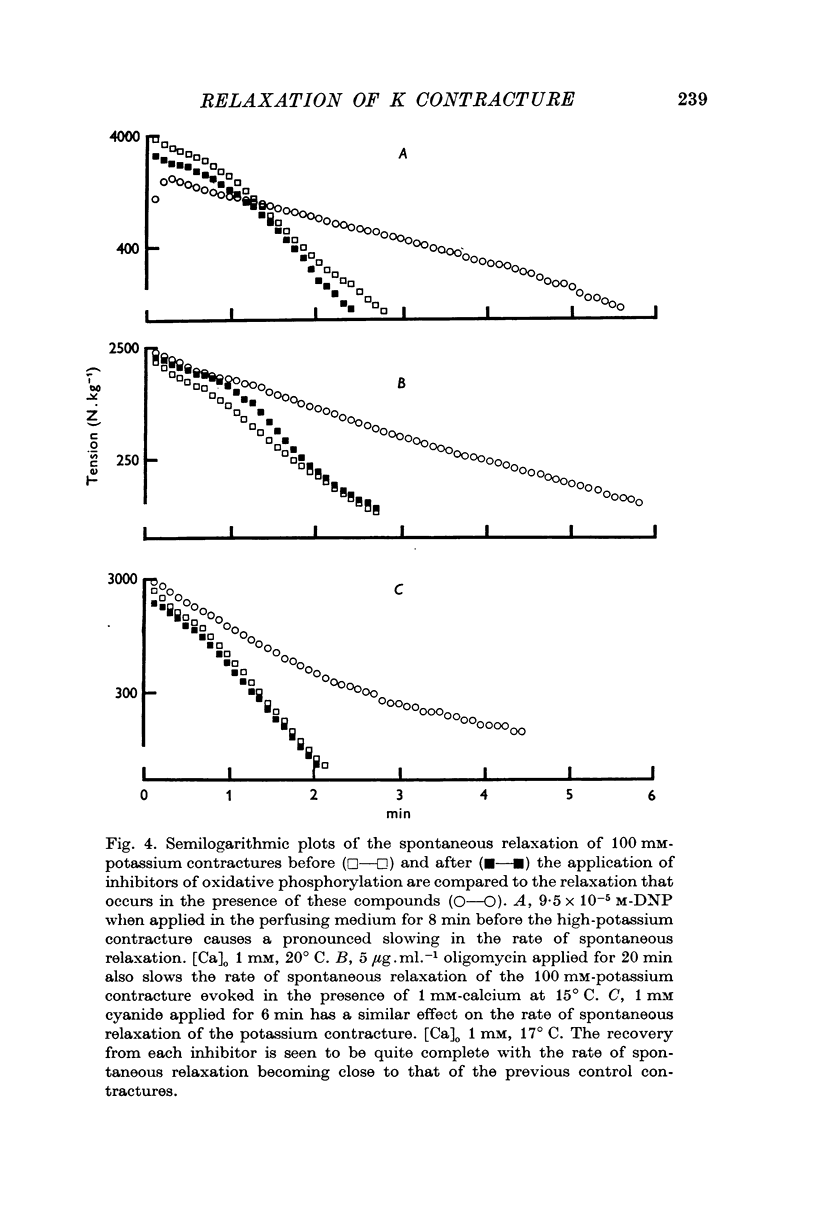
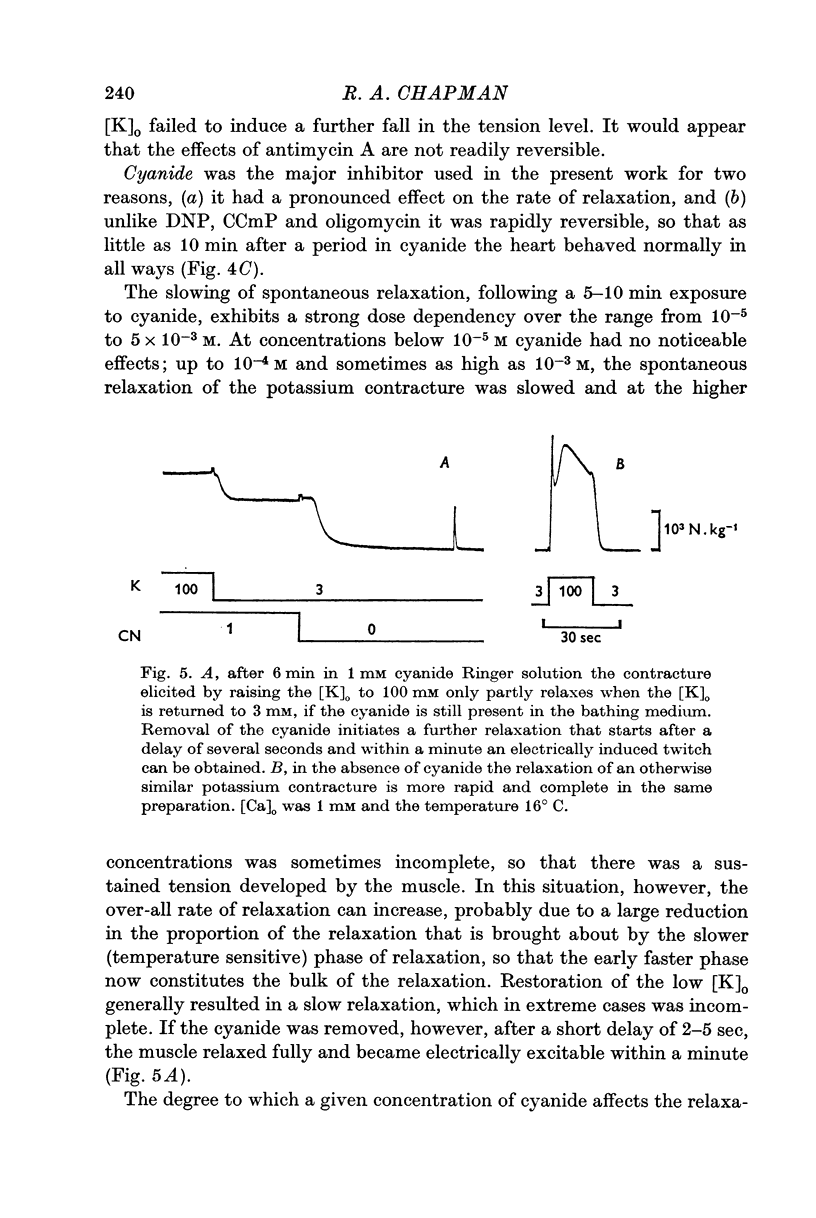
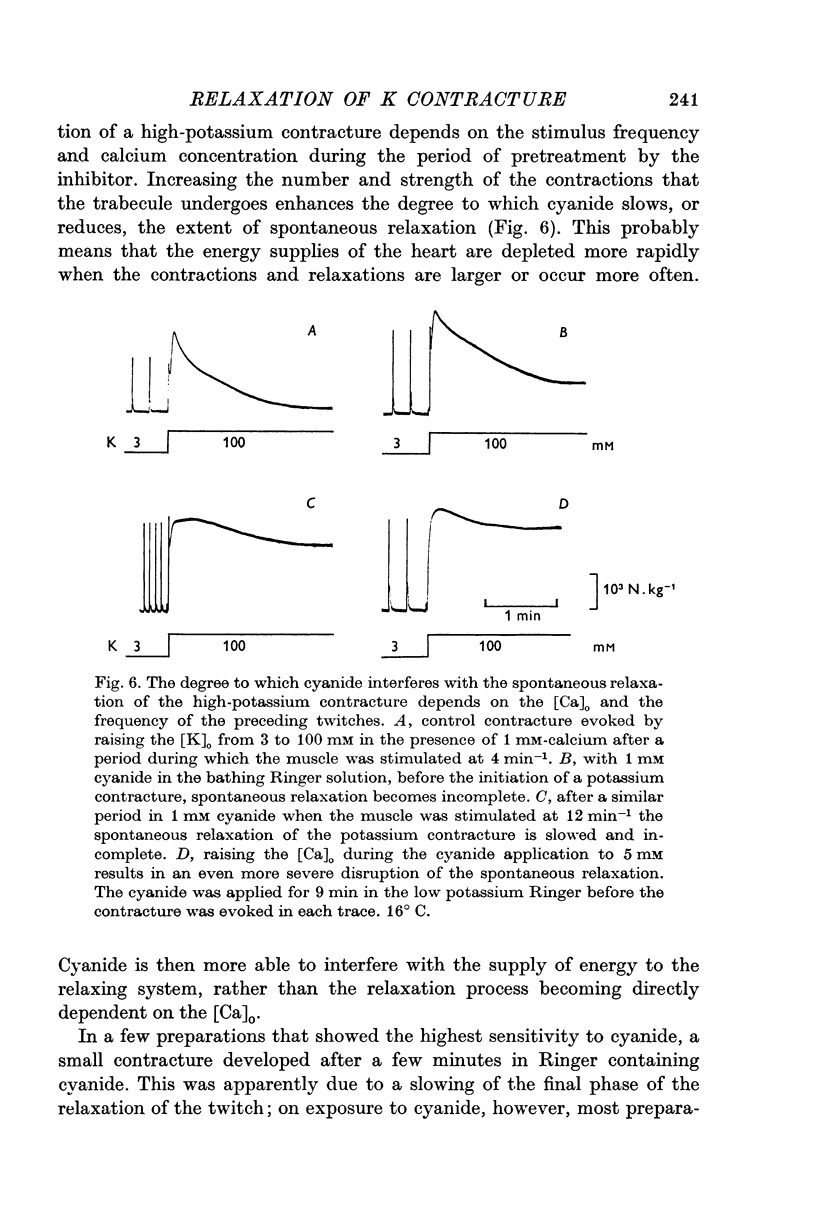
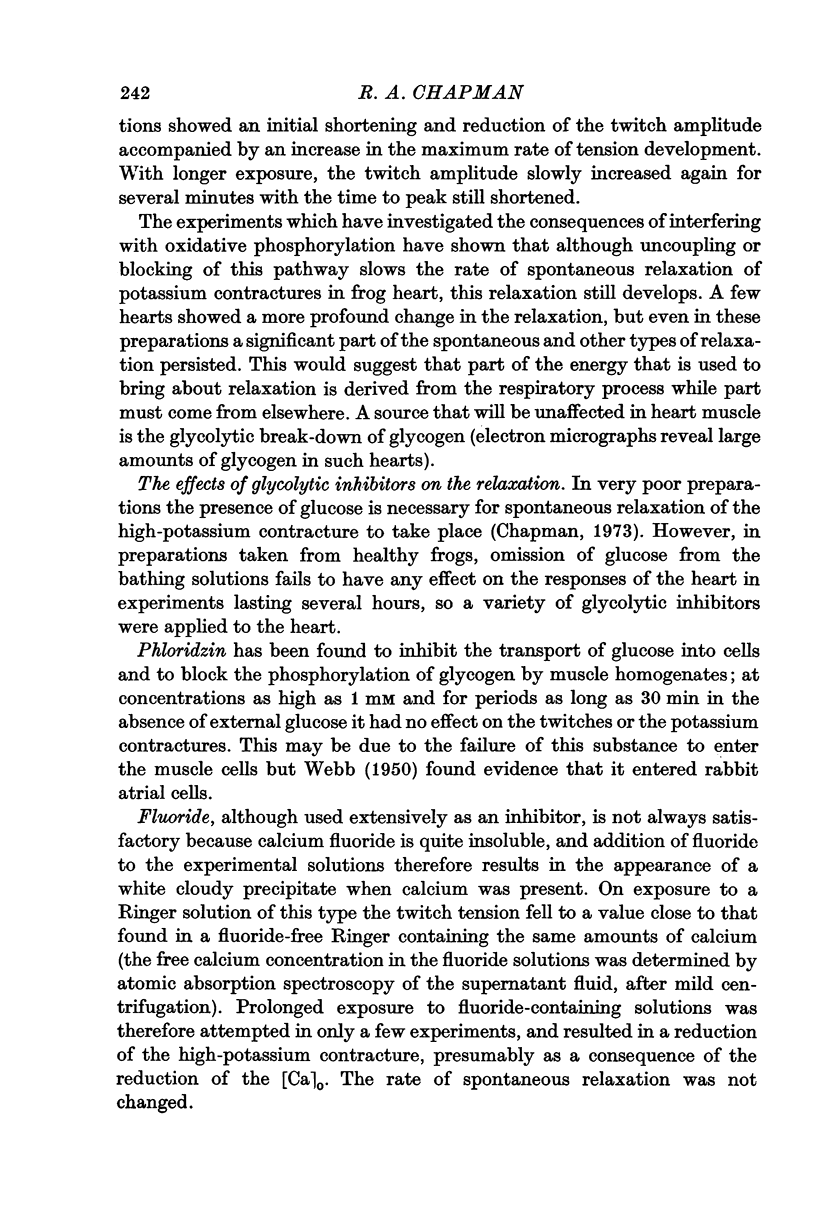
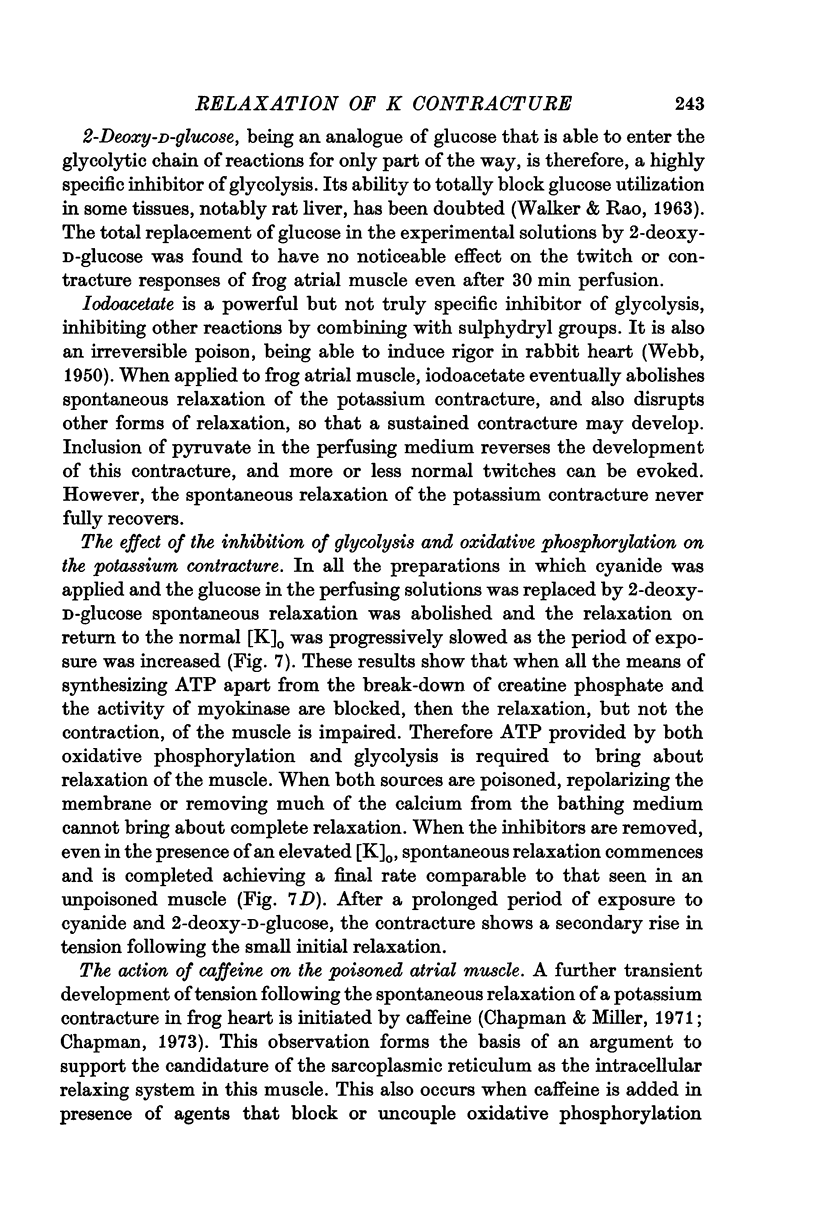
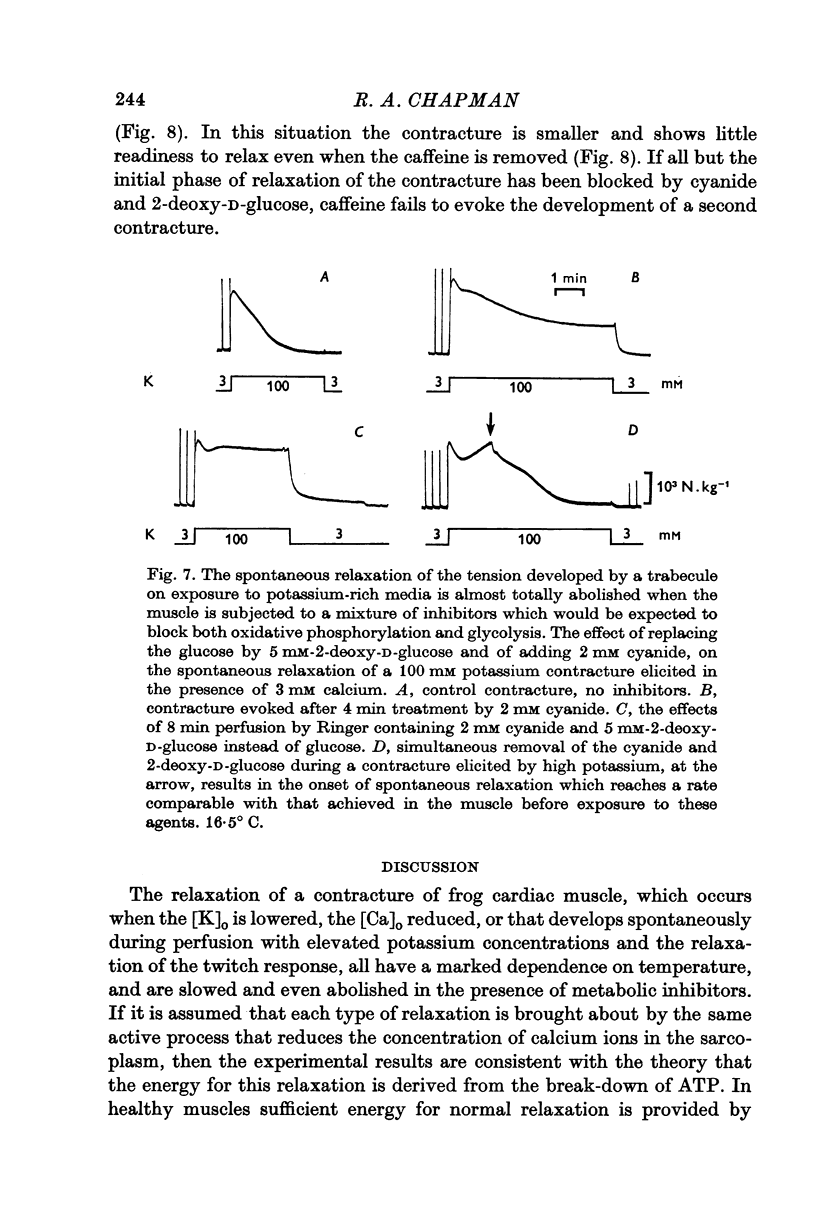

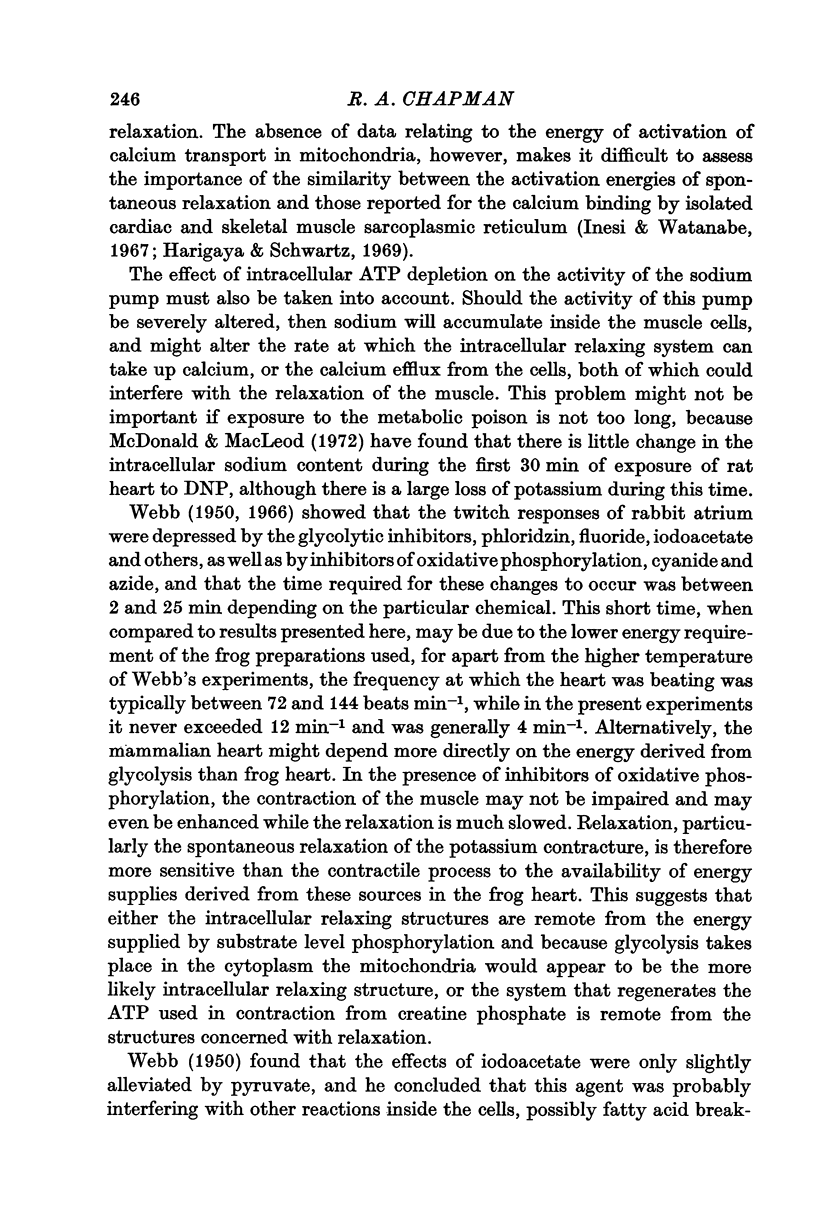
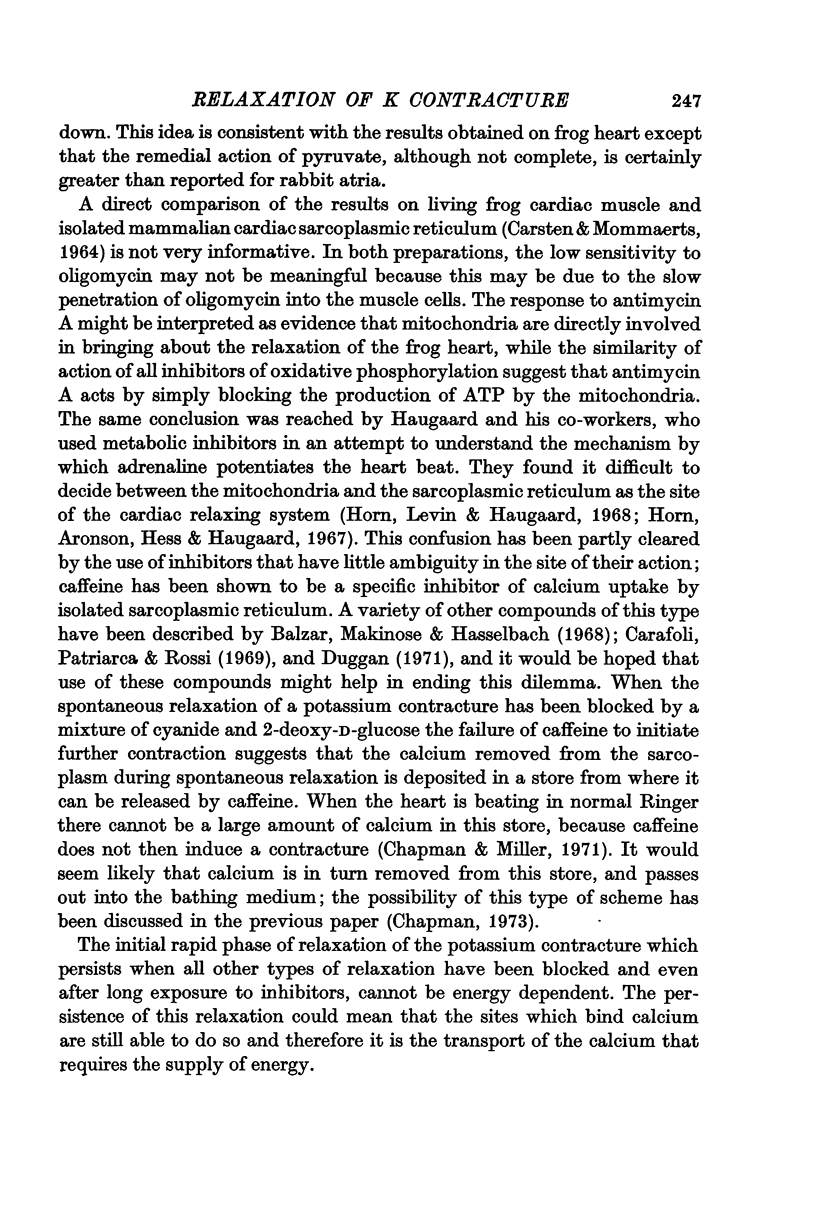
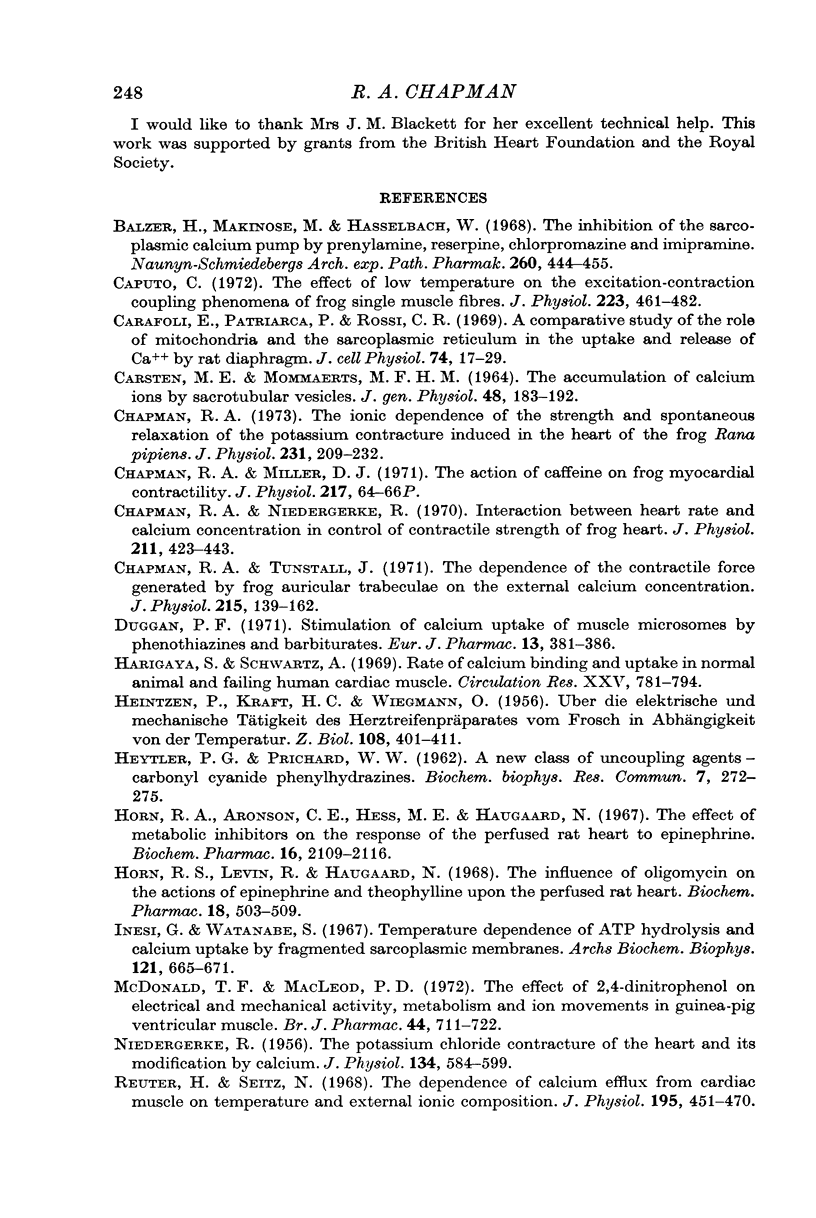
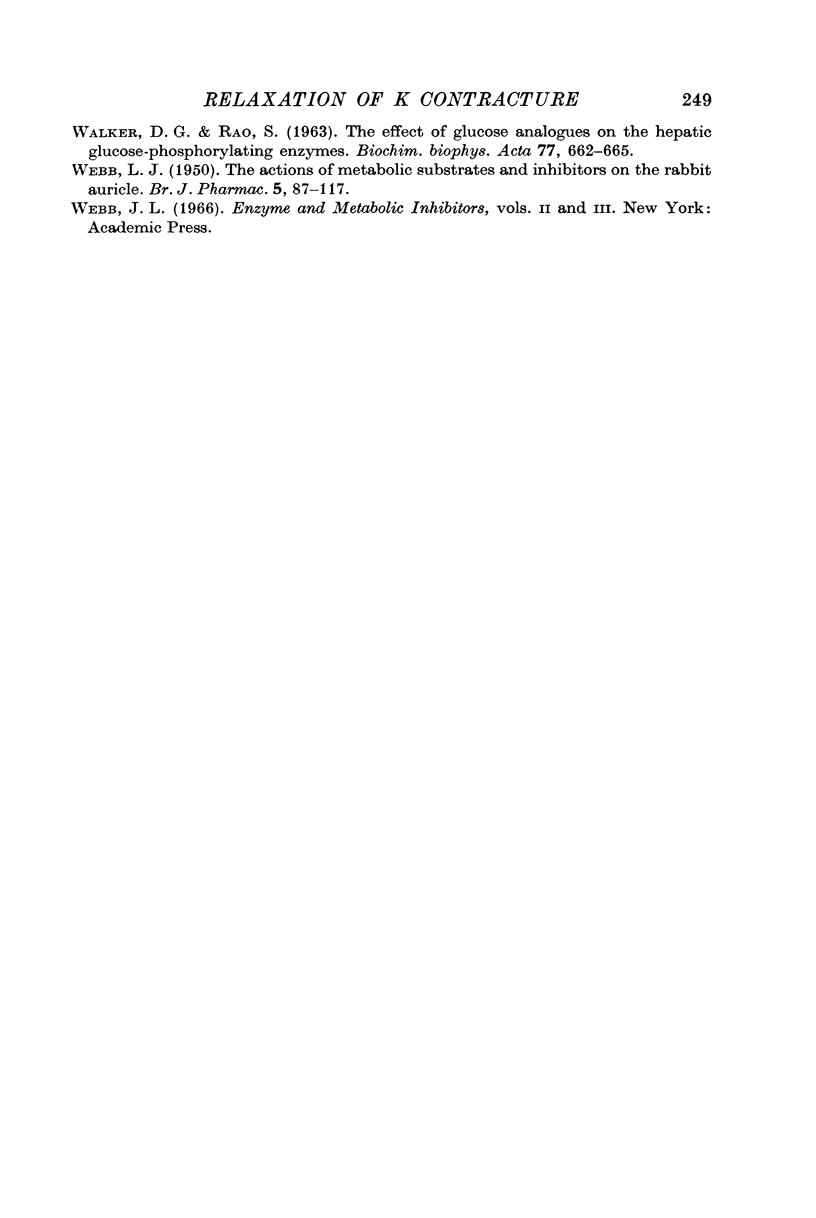
Selected References
These references are in PubMed. This may not be the complete list of references from this article.
- Balzer H., Makinose M., Hasselbach W. The inhibition of the sarcoplasmic calcium pump by prenylamine, reserpine, chlorpromazine and imipramine. Naunyn Schmiedebergs Arch Exp Pathol Pharmakol. 1968;260(5):444–455. doi: 10.1007/BF00537359. [DOI] [PubMed] [Google Scholar]
- CARSTEN M. E., MOMMAERTS W. F. THE ACCUMULATION OF CALCIUM IONS BY SARCOTUBULAR VESICLES. J Gen Physiol. 1964 Nov;48:183–197. doi: 10.1085/jgp.48.2.183. [DOI] [PMC free article] [PubMed] [Google Scholar]
- Caputo C. The effect of low temperature on the excitation-contraction coupling phenomena of frog single muscle fibres. J Physiol. 1972 Jun;223(2):461–482. doi: 10.1113/jphysiol.1972.sp009858. [DOI] [PMC free article] [PubMed] [Google Scholar]
- Chapman R. A., Niedergerke R. Interaction between heart rate and calcium concentration in the control of contractile strength of the frog heart. J Physiol. 1970 Dec;211(2):423–443. doi: 10.1113/jphysiol.1970.sp009285. [DOI] [PMC free article] [PubMed] [Google Scholar]
- Chapman R. A. The onic dependence of the strength and spontaneous relations of the potassium contracture induced in the heart of the frog Rana pipiens. J Physiol. 1973 Jun;231(2):209–232. doi: 10.1113/jphysiol.1973.sp010229. [DOI] [PMC free article] [PubMed] [Google Scholar]
- Chapman R. A., Tunstall J. The dependence of the contractile force generated by frog auricular trabeculae upon the external calcium concentration. J Physiol. 1971 May;215(1):139–162. doi: 10.1113/jphysiol.1971.sp009462. [DOI] [PMC free article] [PubMed] [Google Scholar]
- Duggan P. F. Stimulation of calcium uptake of muscle microsomes by phenothiazines and barbiturates. Eur J Pharmacol. 1971;13(3):381–386. doi: 10.1016/0014-2999(71)90230-5. [DOI] [PubMed] [Google Scholar]
- HEINTZEN P., KRAFT H. G., WIEGMANN O. Uber die elektrische und mechanische Tätigkeit des Herzstreifenpräparates vom Frosch in Abhängigkeit von der Temperatur. Z Biol. 1956;108(6):401–411. [PubMed] [Google Scholar]
- HEYTLER P. G., PRICHARD W. W. A new class of uncoupling agents--carbonyl cyanide phenylhydrazones. Biochem Biophys Res Commun. 1962 May 4;7:272–275. doi: 10.1016/0006-291x(62)90189-4. [DOI] [PubMed] [Google Scholar]
- Harigaya S., Schwartz A. Rate of calcium binding and uptake in normal animal and failing human cardiac muscle. Membrane vesicles (relaxing system) and mitochondria. Circ Res. 1969 Dec;25(6):781–794. doi: 10.1161/01.res.25.6.781. [DOI] [PubMed] [Google Scholar]
- Horn R. S., Aronson C. E., Hess M. E., Haugaard N. The effect of metabolic inhibitors on the response of the perfused rat heart to epinephrine. Biochem Pharmacol. 1967 Nov;16(11):2109–2116. doi: 10.1016/0006-2952(67)90008-1. [DOI] [PubMed] [Google Scholar]
- Horn R. S., Levin R., Haugaard N. The influence of oligomycin on the actions of epinephrine and theophylline upon the perfused rat heart. Biochem Pharmacol. 1969 Feb;18(2):503–509. doi: 10.1016/0006-2952(69)90226-3. [DOI] [PubMed] [Google Scholar]
- Inesi G., Watanabe S. Temperature dependence of ATP hydrolysis and calcium uptake by fragmented sarcoplasmic membranes. Arch Biochem Biophys. 1967 Sep;121(3):665–671. doi: 10.1016/0003-9861(67)90051-3. [DOI] [PubMed] [Google Scholar]
- McDonald T. F., MacLeod D. P. The effect of 2,4-dinitrophenol on electrical and mechanical activity, metabolism and ion movements in guinea-pig ventricular muscle. Br J Pharmacol. 1972 Apr;44(4):711–722. doi: 10.1111/j.1476-5381.1972.tb07309.x. [DOI] [PMC free article] [PubMed] [Google Scholar]
- NIEDERGERKE R. The potassium chloride contracture of the heart and its modification by calcium. J Physiol. 1956 Dec 28;134(3):584–599. doi: 10.1113/jphysiol.1956.sp005667. [DOI] [PMC free article] [PubMed] [Google Scholar]
- Reuter H., Seitz N. The dependence of calcium efflux from cardiac muscle on temperature and external ion composition. J Physiol. 1968 Mar;195(2):451–470. doi: 10.1113/jphysiol.1968.sp008467. [DOI] [PMC free article] [PubMed] [Google Scholar]
- WEBB J. L. The actions of metabolic substrates and inhibitors on the rabbit auricle. Br J Pharmacol Chemother. 1950 Mar;5(1):87–117. doi: 10.1111/j.1476-5381.1950.tb00580.x. [DOI] [PMC free article] [PubMed] [Google Scholar]


